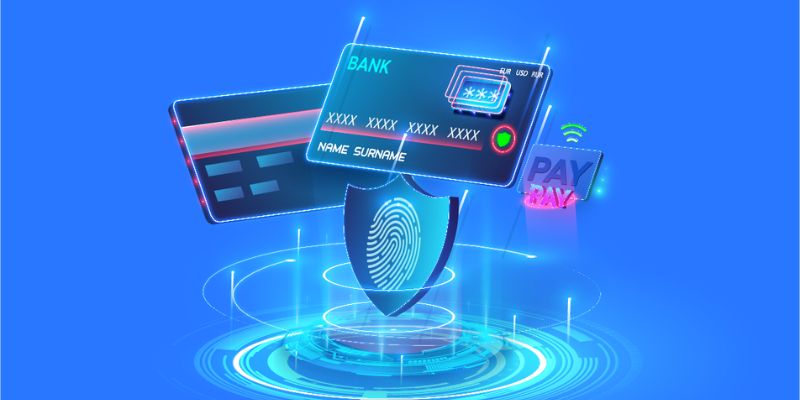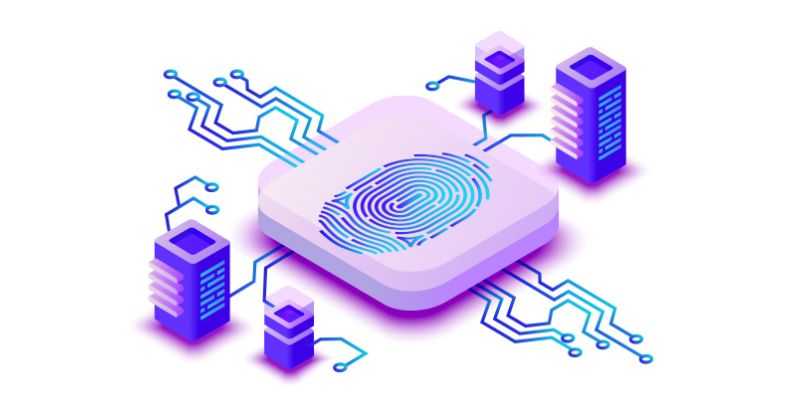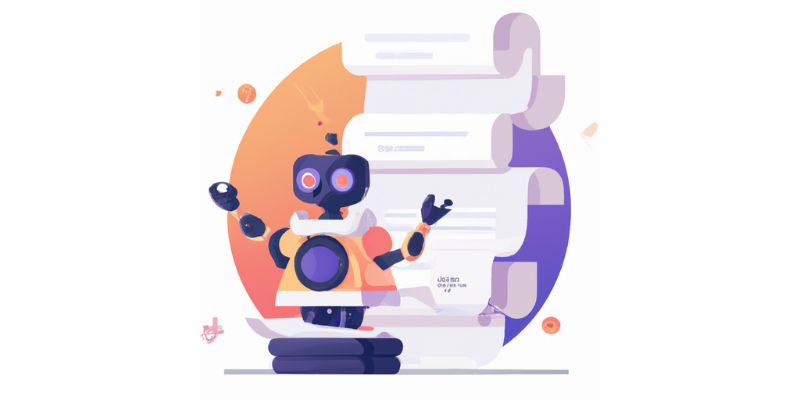Imagine your face or fingerprint being the key to buying your next latte. Sounds like sci-fi, right? Well, biometric authentication for digital payments is making that a reality. Scanning your unique features to pay takes mere seconds. It’s safe, fast, and you can never forget it at home like your wallet. Dive in as we explore how this tech is changing our money moves, and if it really is the secure future we’ve all been waiting for.
Understanding the Shift to Biometric Authentication in Digital Payments
Evolution from PINs to Biometric Validation Methods
We all used to type in a PIN at checkout. Now we can pay with just a fingerprint. How cool is that? This shift means we don’t have to remember numbers anymore. And that’s just the start. Our faces, voices, even the way we walk can all prove it’s us when we buy something. This is how biometric validation methods are changing the game.
Different Biometric Technologies and Their Role in Financial Transactions
Imagine paying with a glance or a word. That’s where we’re headed, friends. Fingerprints lead the way in fingerprint payment technology. They’re easy to use and hard to copy. You’ve seen it on phones and laptops, right? Well, now it’s moving into shops and cafes.
Next up – your face. It’s another key player in facial recognition transactions. Show your smile, grab your coffee, and you’re good to go. Some worry about privacy, but stores keep improving their safety steps. They want you to feel secure.
Ever thought your voice could buy stuff? With voice authentication payments, it can. Just speak and technology does the rest. They match your voice’s unique sound with your account. Simple and safe. Iris scanning payment systems are a bit like that, using eyes instead. Your eye has patterns no one else has. They check those patterns when you pay – no contact needed.
And here’s something wild – your veins can pay for you. Yep, vein pattern identification is a real thing. It checks the pattern of veins in your hand. Talk about personal!
All these amazing tools help keep our money safe. They build on what mobile wallet security is all about. No more swiping or contact; just use your body. It’s all about making sure real people are making real buys.
Together with other safety steps, like multi-factor authentication, these methods create a wall against thieves. It’s not just about needing something you know anymore, like a password. Now, it’s about proving you’re you with what you are. That’s biometric validation methods at work.
We’re talking banks, stores, restaurants, and more. They’re using new tech to stop fraud. Banks really dig this, always looking for the best fraud prevention in banking.
But, it’s more than stopping bad guys. It’s about guarding what makes you, you. Your biometric data is precious. Laws help protect it too. These rules make sure your details aren’t misused.
In our huge digital payment ecosystem, we want things easy and safe. Whether it’s using our face, voice, thumb, or even our heart rate, these biometrics are here to help us. They protect us and help prove it’s really us enjoying this new world of buying and selling.
We’re part of something big – a move to make paying not just handy but also really, really secure. The smart tech in our phones and cards is changing how we think about buying. This is the new normal, folks. And it’s getting better and safer, all thanks to biometrics.

Enhancing Transaction Security Through Biometric Solutions
Role of Multi-Factor Authentication in Preventing Fraud
We keep hearing about fraud in banking. It’s a big worry for all of us. Good news, there’s a way to make things safer. It’s called multi-factor authentication or MFA for short. Think of it like a cool security team for your money. With MFA, you need more than one way to prove it’s really you. Let’s say you want to buy something online. First, you might type in a password. That’s step one.
But wait, there’s more. Step two might have you use your fingerprint. Or, maybe your phone snaps a quick pic of your face. This is great because it’s really hard for bad guys to fake. It’s like having a secret handshake that only your phone knows. If the bad guys don’t know your handshake, they can’t take your money. This makes your cash much safer.
Regulatory Compliance and Biometric Data Protection Measures
Now, with all these cool tech like fingerprints and face scans, comes a big job. We need to keep that info safe and sound. After all, it’s all about you, and you’re important. The people who make the rules agree. They make laws to make sure everyone handles your data with care. For example, you’ve got the GDPR in Europe. They’re like the hall monitors for your personal info.
These big rulebooks tell banks and shops exactly how to protect your skin prints and face maps. They make sure nobody gets their hands on them without your say-so. And if someone tries to be sneaky? They could be in big trouble. This helps you trust the shops and banks with your special data.
By getting biometric security right, we not only keep our money safe, but we also make sure that everyone plays by the rules. With smart people working on it and tough rules in place, we’re building a digital payment world that’s safe as houses. This is a huge leap in making sure that when you tap to pay, it’s as secure as when you lock your front door.

The User Experience and Adoption of Biometric Payment Systems
Integrating Biometric Sensors in Smartphones and Payment Cards
Biometric sensors have changed the game. Your phone’s thumbprint scanner makes things easy. It’s not just cool. It pulls off a magic trick, swapping your thumbpress for pins and passwords. Fingerprints, faces, voices become keys to unlock digital treasures. They sneak into smartphones and payment cards.
How do they work? Let’s say your phone needs your face. You hold it up, it looks at you, and voilà, it knows it’s you. No typing, no fussing. This tech is rolling out in cards too. Think of paying with a smile or a wink. Banks love this because it’s quick and tightens up security.
Addressing Concerns with Contactless and Mobile Wallet Security
Not everyone’s sold on this tech though. Some worry contactless taps might open doors to thieves. I get it, safety first. But hear me out – these biometric systems are like guard dogs. They sniff out the who’s who before saying okay to payments. If it’s not you, they won’t budge.
Plus, there’s this thing called multi-factor authentication. It’s like having both a lock and an alarm on your door. Even if a sneaky thief copies your fingerprint, they’ll hit a wall. They need your phone or card too, which is way harder.
We’re setting up solid walls against fraudsters, keeping up with the bad guys. It’s a race where we’ve got to stay one step ahead. Using our unique bits – fingerprints, voices, even the pattern of veins on our hand – makes payments smooth and tight.
Kids are catching on fast, loving how quick they can buy with a touch. Parents are warming up too. They see their kids paying with a tap or a look and start to wonder, “Hey, should I get in on this?” It’s all about trust and ease. Get those two down, and folks will flock.
Remember, your face and voice are yours alone. They’re pretty nifty keys that can’t be copied easy. They make paying fast and keep your cash safe. Biometrics are making checkout lines zip by.
As for security, think of biometrics like a superhero team – each with its own power. A fingerprint here, a face scan there, they’re all on guard. Together, they make sure no baddie gets through. We’re safer, we’re faster, and hey, it’s just plain cool. Using yourself to pay? Welcome to the future, my friends.

Future Trends and Developments in Biometric Payment Technologies
Advancements in Biometric Encryption and Authentication Algorithms
We all buy things with a tap on our phone. Easy, right? But it needs to be safe, too. This is where biometric encryption steps in. It uses our body’s unique features, like fingerprints, to lock and unlock our digital wallets. That’s safer than just a password.
Imagine paying with just your face or voice! That future is not far off. Tech wizards work hard to make facial recognition and voice authentication better. They are building complex math recipes, called algorithms, to figure out it’s really you. That way, no one else can pretend to be you and spend your money.
Fingerprint payment tech has been around for a bit. You’ve probably used your thumb to buy something. Now, think bigger. We’re not just talking thumbs! New gear, like thumbprint scanners, is getting better and can read your print fast and right. This means even if someone tries to trick it, they won’t win.
We’re boosting financial security measures. It’s a game of cat and mouse with the bad guys. But with each move they make, our tech gets sharper. We’re also keeping a close eye on how we handle your fingerprint or face map. That’s biometric data protection. It means keeping your info under lock and key, safe from sneaky types.
The Potential of Emerging Biometric Modalities for Secure Payments
Now, let’s chat about the new kids on the block: iris scanning and vein pattern ID. We all have our own special eye pattern and vein map. Machines can read these to check it’s us. Cool, huh? It’s like a superpower, but for paying for stuff.
Mobile wallets are the new piggy banks. But they need to be tough to crack. So, we’re mixing in multi-factor authentication. It’s like a secret handshake you and your phone share. You might give your fingerprint and then a code. Double trouble for anyone trying to sneak in!
What’s buzzing in the tech world now? Things like heart rate payments. Yes, your heartbeat might one day approve a buy. We’re also testing palm recognition. Wave over a reader, and you’re good to go. Easy!
These fancy tools make sure our contactless payments are quick but also safe. Nobody wants to worry when tapping to pay. That’s why we make it all contactless payment verification. Quick zap, and you’ve paid, no bad stuff added.
We know all this sounds like spy stuff. But it’s here to make sure our cash stays ours. We don’t want any tricks, just treats when we’re shopping.
Keep your eyes peeled, friends. The way we pay is changing fast. And it’s my job to keep those changes safe and snappy for everyone. So, next time you tap, wink, or speak to pay, know that a whole bunch of smart tech is working for you. It’s like having your own financial bodyguard, and these bodyguards are always learning new moves.
In this post, we explored how biometric authentication is reshaping digital payments. We’ve seen the move from simple PINs to advanced biometric methods. This change aims to improve security and combat fraud, making transactions safer. We now have many options, like fingerprints and eye scans, which protect our money more than before.
We also looked at how these technologies meet strict rules to keep our personal info safe. With biometrics, our payment tools, like phones and cards, get smarter and more secure. They make buying things quick and worry-free.
Looking ahead, expect even cooler tech for checking who we are and keeping our cash safe. We’re talking about better ways to prove it’s really us without a hitch. Soon, paying with a look or a touch will be the norm.
By making payments simple and safe, biometrics give us the power to shop with peace of mind. Our future with these tools looks bright and secure!
Q&A :
How does biometric authentication enhance the security of digital payments?
Biometric authentication leverages unique physical characteristics, such as fingerprints, facial recognition, or iris scans, to verify an individual’s identity. This method adds an extra layer of security to digital payments by ensuring that the transaction is authorized by the genuine account holder, effectively reducing the risk of fraud and unauthorized access.
What types of biometric authentication are commonly used for digital payments?
Several types of biometric authentication methods are currently in use for securing digital payments, including fingerprint scanning, facial recognition, voice recognition, and iris scanning. These methods offer a convenient and quick way for users to prove their identity without remembering passwords or PINs.
Can biometric authentication be used on all smart devices for digital payments?
Most modern smartphones and tablets are equipped with sensors that support various forms of biometric authentication. However, the availability and compatibility can vary depending on the device make, model, and the financial application in use. It is essential to check with the device specifications and payment service provider for support details.
Is biometric authentication for digital payments safe from hackers?
While biometric authentication provides an advanced level of security, no system is entirely immune to hacking. However, biometric data is usually encrypted, making it difficult for cybercriminals to replicate or access. Continual advancements in technology and security measures are enhancing the safety of biometric systems in the fight against hacking.
What happens if the biometric authentication fails during a digital payment?
In the event that biometric authentication fails, most systems offer alternative verification methods, such as PIN codes or security questions to ensure the user can still complete their digital payment. It is also advisable to keep the biometric sensors clean and to contact customer support if persistent issues occur.

